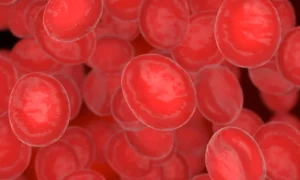 Sickle Cell Anemia, a hereditary blood disease, holds a profound global impact, affecting millions of individuals.
Sickle Cell Anemia, a hereditary blood disease, holds a profound global impact, affecting millions of individuals.
Today we will delve into the intricate facets of Sickle Cell Anemia, providing insights into the disease itself, its signs and symptoms, and the underlying genetic causes that make it a lifelong challenge for many.
Understanding Sickle Cell Anemia
Sickle Cell Anemia, also known as Sickle Cell Disease (SCD), stands as a genetic anomaly altering the structure and function of red blood cells. Typically, red blood cells exhibit a flexible, round shape, allowing them to navigate blood vessels effortlessly.
However, in individuals grappling with Sickle Cell Anemia, these cells adopt a rigid, crescent, or “sickle” shape. This abnormality triggers a range of health issues.
Signs and Symptoms
- Painful Crises. Sickle Cell Anemia’s hallmark feature is the occurrence of agonizing “crises.” These sudden, intense episodes result in severe pain, affecting various body parts, such as the chest, abdomen, joints, and bones.
- Fatigue. Irregularly shaped red blood cells disrupt oxygen flow, leading to persistent fatigue and weakness.
- Jaundice. Fragile sickle cells are prone to breaking apart, causing bilirubin buildup and jaundice, marked by yellowing of the skin and eyes.
- Swelling of Extremities. Blood flow obstruction in small vessels often results in swelling, especially in the hands and feet.
- Increased Infection Susceptibility. Weakened immune systems make individuals with Sickle Cell Anemia more prone to infections.
Causes of Sickle Cell Anemia
Sickle Cell Anemia arises from a mutation in the HBB gene, responsible for encoding hemoglobin, the oxygen-carrying protein in red blood cells. The mutation prompts the production of abnormal hemoglobin known as hemoglobin S (HbS). When oxygen levels dip, HbS causes red blood cells to adopt the characteristic sickle shape.
This genetic disorder follows an autosomal recessive pattern. For an individual to manifest Sickle Cell Anemia, they must inherit two copies of the mutated gene – one from each parent. Those who inherit just one copy of the mutated gene are carriers of the disease, known as having “sickle cell trait.” These carriers typically do not exhibit the severe symptoms seen in individuals with both copies of the mutated gene.
Sickle Cell Anemia is a complex genetic disorder with profound implications for health. Recognizing its signs and understanding its genetic basis is essential for early diagnosis and effective management.
Ongoing research and medical advances continue to enhance the quality of life for individuals grappling with Sickle Cell Anemia, offering hope for a brighter future.
Picture Credit: Freepik
